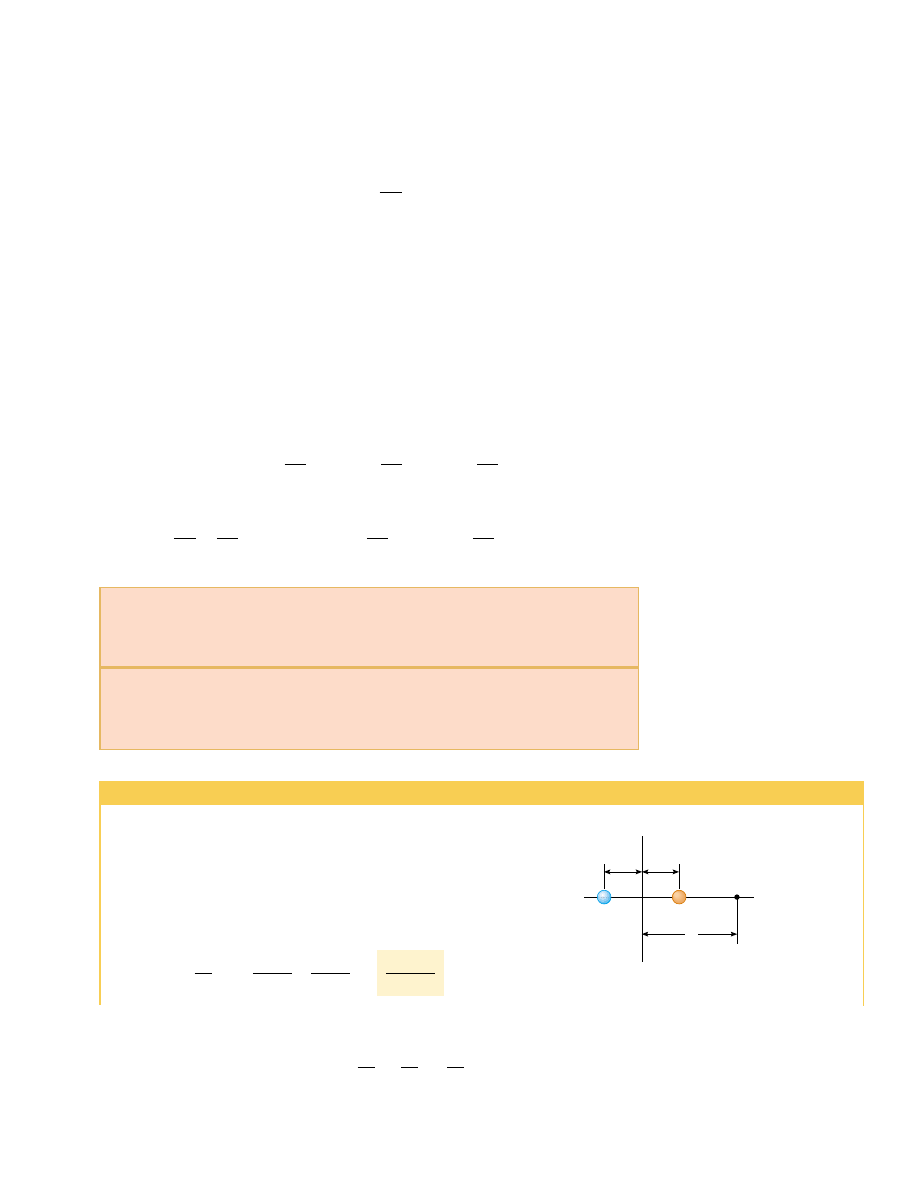Physics For Scientists And Engineers 6E - part 194

SECTION 25.4 • Obtaining the Value of the Electric Field from the Electric Potential
773
If the charge distribution creating an electric field has spherical symmetry such that
the volume charge density depends only on the radial distance r, then the electric field
is radial. In this case,
E " ds # E
r
dr, and we can express dV in the form dV # ! E
r
dr.
Therefore,
(25.17)
For example, the electric potential of a point charge is V # k
e
q/r. Because V is a func-
tion of r only, the potential function has spherical symmetry. Applying Equation 25.17,
we find that the electric field due to the point charge is E
r
#
k
e
q/r
2
, a familiar result.
Note that the potential changes only in the radial direction, not in any direction
perpendicular to r. Thus, V (like E
r
) is a function only of r. Again, this is consistent with
the idea that
equipotential surfaces are perpendicular to field lines. In this case
the equipotential surfaces are a family of spheres concentric with the spherically
symmetric charge distribution (Fig. 25.13b).
The equipotential surfaces for an electric dipole are sketched in Figure 25.13c.
In general, the electric potential is a function of all three spatial coordinates. If
V(r) is given in terms of the Cartesian coordinates, the electric field components E
x
, E
y
,
and E
z
can readily be found from V(x, y, z) as the partial derivatives
3
(25.18)
For example, if V # 3x
2
y ) y
2
)
yz, then
,
V
,
x
#
,
,
x
(3x
2
y ) y
2
)
y
z) #
,
,
x
(3x
2
y) # 3y
d
dx
(x
2
) # 6x
y
E
x
# !
,
V
,
x
E
y
# !
,
V
,
y
E
z
# !
,
V
,
z
E
r
# !
dV
d
r
3
In vector notation,
E is often written in Cartesian coordinate systems as
where - is called the gradient operator.
E # !-V # !
'
iˆ
,
,
x
)
jˆ
,
,
y
)
kˆ
,
,
z
(
V
Quick Quiz 25.8
In a certain region of space, the electric potential is zero
everywhere along the x axis. From this we can conclude that the x component of the
electric field in this region is (a) zero (b) in the ) x direction (c) in the ! x direction.
Quick Quiz 25.9
In a certain region of space, the electric field is zero. From
this we can conclude that the electric potential in this region is (a) zero (b) constant
(c) positive (d) negative.
Example 25.4 The Electric Potential Due to a Dipole
An electric dipole consists of two charges of equal magni-
tude and opposite sign separated by a distance 2a, as shown
in Figure 25.14. The dipole is along the x axis and is
centered at the origin.
(A)
Calculate the electric potential at point P.
Solution For point P in Figure 25.14,
2k
e
qa
x
2
!
a
2
V # k
e
&
q
i
r
i
#
k
e
'
q
x ! a
!
q
x ) a
(
#
a
a
q
P
x
x
y
–q
Figure 25.14 (Example 25.4) An electric dipole located on the
x axis.
Finding the electric field from
the potential